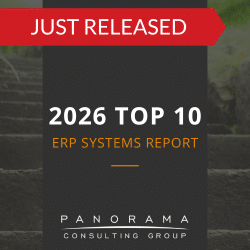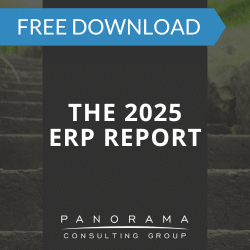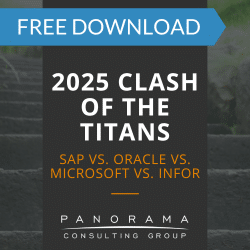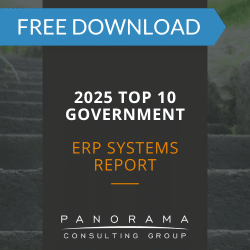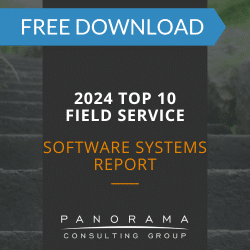Key Takeaways
- AI agent pricing varies widely across ERP platforms and standalone tools, often depending on licensing tiers, cloud dependencies, and usage-based models.
- Total AI agent costs include more than subscription fees, covering implementation, data integration, training, and governance investments.
- Measuring agentic AI ROI requires tracking time savings, improved decision quality, and process-level KPIs.
- AI agents in ERP systems introduce cost categories related to data readiness, role-based access, and compliance.
For many organizations, AI agents represent the next evolution of enterprise software. Embedded within ERP platforms and cloud ecosystems, these agents are designed to automate workflows and generate insights. Yet beneath the marketing hype, the real cost of AI agents requires much closer scrutiny.
Executives considering standalone AI agents or AI agents in ERP software need to consider organizational readiness, licensing complexities, and long-term return on investment.
The 2025 ERP Report
72.6% of respondents said they've already deployed AI at their organizations. Learn about AI adoption and other ERP trends by downloading our latest report.
Is Your Organization Ready for AI Agents?
Before evaluating AI agent pricing, organizations should first assess whether AI agents are the right investment at this stage in their digital roadmap. Many organizations move too quickly into AI initiatives without fully aligning on business objectives, process maturity, or data readiness.
Panorama’s AI readiness assessments evaluate five key dimensions before any deployment:
- Data quality and accessibility
- Technology infrastructure and integration
- Workforce skills and AI literacy
- Compliance and governance maturity
- Strategic alignment with enterprise goals
If foundational gaps exist—such as poor data hygiene, unclear process ownership, or competing digital initiatives—AI agents may deliver limited value. In these cases, strengthening ERP adoption or modernizing legacy systems may yield greater ROI than introducing intelligent agents.
Why the Real Cost of AI Agents Is Hard to Pin Down
The term AI agent now describes a wide range of enterprise tools.
In ERP environments, it might mean an embedded assistant like SAP’s Joule or Microsoft’s Copilot—tools that generate reports, suggest actions, and guide users through workflows.
In other cases, AI agents operate outside ERP as standalone modules automating processes in procurement, finance, HR, or customer service.
This variability creates an immediate challenge: most executives are evaluating different kinds of AI agents under a single category, often without fully understanding the data access, integrations, and process configurations each one requires.
Licensing structures rarely reflect this complexity:
- For embedded agents, pricing may appear to be bundled with cloud subscriptions, but real costs often arise from enabling adjacent services, integrating siloed systems, and training users to use the tool.
- For standalone agents, organizations face additional overhead—API management, data orchestration, and platform governance—all of which can double or triple the total cost of ownership over time.
Breaking Down AI Agent Cost Categories
1. Licensing and Subscription Dependencies
ERP vendors often bundle AI agents into premium tiers, charge add-on fees, or adopt consumption-based pricing.
For example, Salesforce’s Agentforce 360 includes per-conversation pricing layered on top of Data Cloud entitlements. Microsoft, meanwhile, has restructured its Copilot pricing into both subscription and pay-as-you-go models.
We’ve seen other popular ERP systems, like Oracle Cloud ERP, priced with AI agent capabilities bundled into higher-tier subscription plans or tied to separate cloud service entitlements.
The takeaway: Published price lists rarely reflect the full cost. Executives should assess what is already covered in current contracts, then model total costs over the next three to five years—including how growing usage could drive up costs for cloud services, data access, and vendor-delivered functionality.
2. Implementation, Integration, and Data Governance
Many organizations assume AI agents will “just work” once enabled, but results depend on how well the technology fits your specific environment. Most of the hidden costs emerge from the effort required to make AI useful within your unique data, systems, and processes.
Successful implementations require:
- Investing in well-managed data pipelines to support consistent outputs.
- Defining clear ownership for each process and assigning role-based responsibilities.
- Integrating AI agents across ERP systems, legacy platforms, and automation tools.
- Testing AI functionality using real-world scenarios, edge cases, and exceptions.
This is why Panorama’s AI enablement services treat implementation, integration, and data governance as core cost categories. The resourcing, coordination, and domain expertise involved is significant.
3. Training, Change Management, and AI Literacy
Even intuitive AI agents fail without trust and adoption. This is where organizational change management (OCM) comes in.
Change management costs can include:
- AI literacy programs for different user groups
- Updated SOPs, policies, and documentation
- Communication campaigns to build user confidence
- Ongoing support for troubleshooting and iteration
AI agent pilots can fail when organizations overestimate readiness or overlook user adoption hurdles. That’s why training must go beyond how to use the tool—it must build trust in outputs and clarify decision-making boundaries between humans and AI. These activities are part of a broader change management effort that requires dedicated investment—so budget wisely.
4. Governance, Compliance, and Risk Mitigation
As AI agents become more embedded in enterprise workflows, the cost of managing their behavior grows accordingly. Establishing AI governance is a sustained investment in oversight, policy development, and cross-functional coordination.
Organizations must dedicate time and resources to define, maintain, and operationalize frameworks that govern:
- Acceptable use and ethical AI principles.
- Auditability and explainability standards for decision support.
- Escalation paths when agent outputs conflict with human judgment.
- Compliance alignment with GDPR, CCPA, and industry-specific regulations.
Implementing these controls requires legal, IT, risk, and operational teams to collaborate on policy development, documentation, training, and ongoing enforcement. For many organizations, this means assigning full-time ownership or establishing new governance functions.
Our business software consultants often advise clients to establish a cross-functional AI governance board to oversee training, compliance, vendor management, and performance monitoring. This board should be factored into your project budget as it must be resourced with the expertise to guide responsible AI adoption at scale.
Where Agent AI ROI Is Emerging—and How to Measure It
To measure ROI effectively, executives should focus on:
- Volume and velocity improvements: How much faster or more efficiently are high-volume tasks completed after agent deployment?
- Labor reallocation: Are employees shifting from manual tasks to higher-value activities?
- Decision quality: Are agent-generated insights improving accuracy, reducing rework, or accelerating cycle times?
- Business-specific KPIs: Are financial close timelines shortening? Are procurement cycle times improving? Are service levels rising?
Successful use cases typically show up first in high-friction, high-volume functions, such as:
- Finance: Journal entry automation, spend monitoring, variance analysis
- Procurement: Supplier onboarding, risk scoring, contract drafting
- Customer Service: Tier-one ticket resolution, knowledgebase search
- Manufacturing: Production anomaly detection, OEE reporting, voice-based shop floor queries
In every case, ROI emerges only when the AI agent is embedded within a process that already has a clear owner and a defined set of metrics. Without that operational anchoring, outcomes remain difficult to track—and harder to scale.
Learn More About AI Agent Costs
AI agents are quickly becoming part of the enterprise software landscape—but realizing value depends on realistic cost expectations from the start.
Licensing fees are only a fraction of the total investment. Hidden costs emerge when it comes to implementation, integration, governance, and change management.
By balancing innovation with accountability, executives can invest wisely and achieve sustainable ROI.
Panorama’s AI readiness consulting team evaluates data maturity, technology alignment, and workforce preparedness before deployment. Contact us below to discuss the costs and benefits of AI agents.






